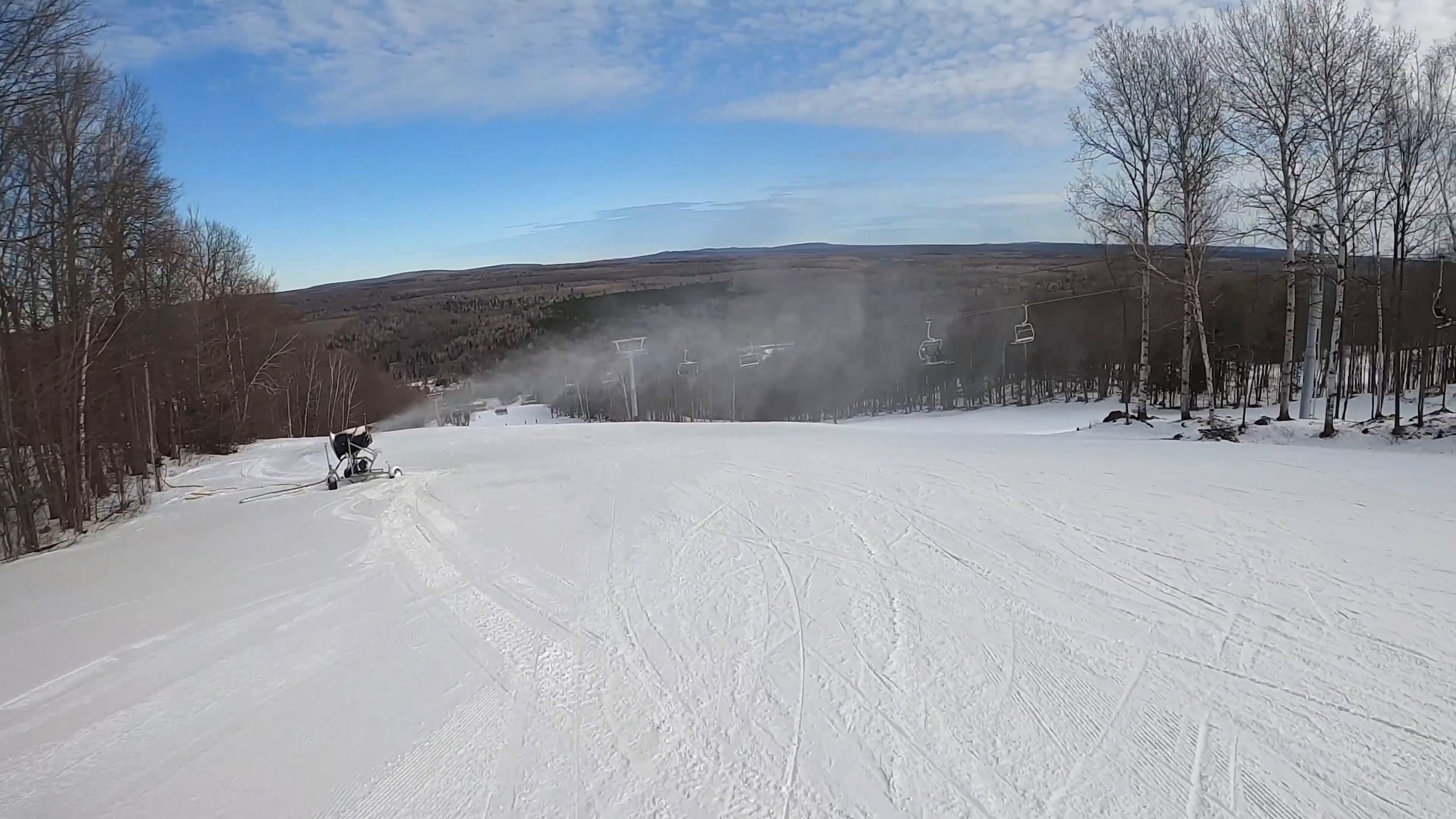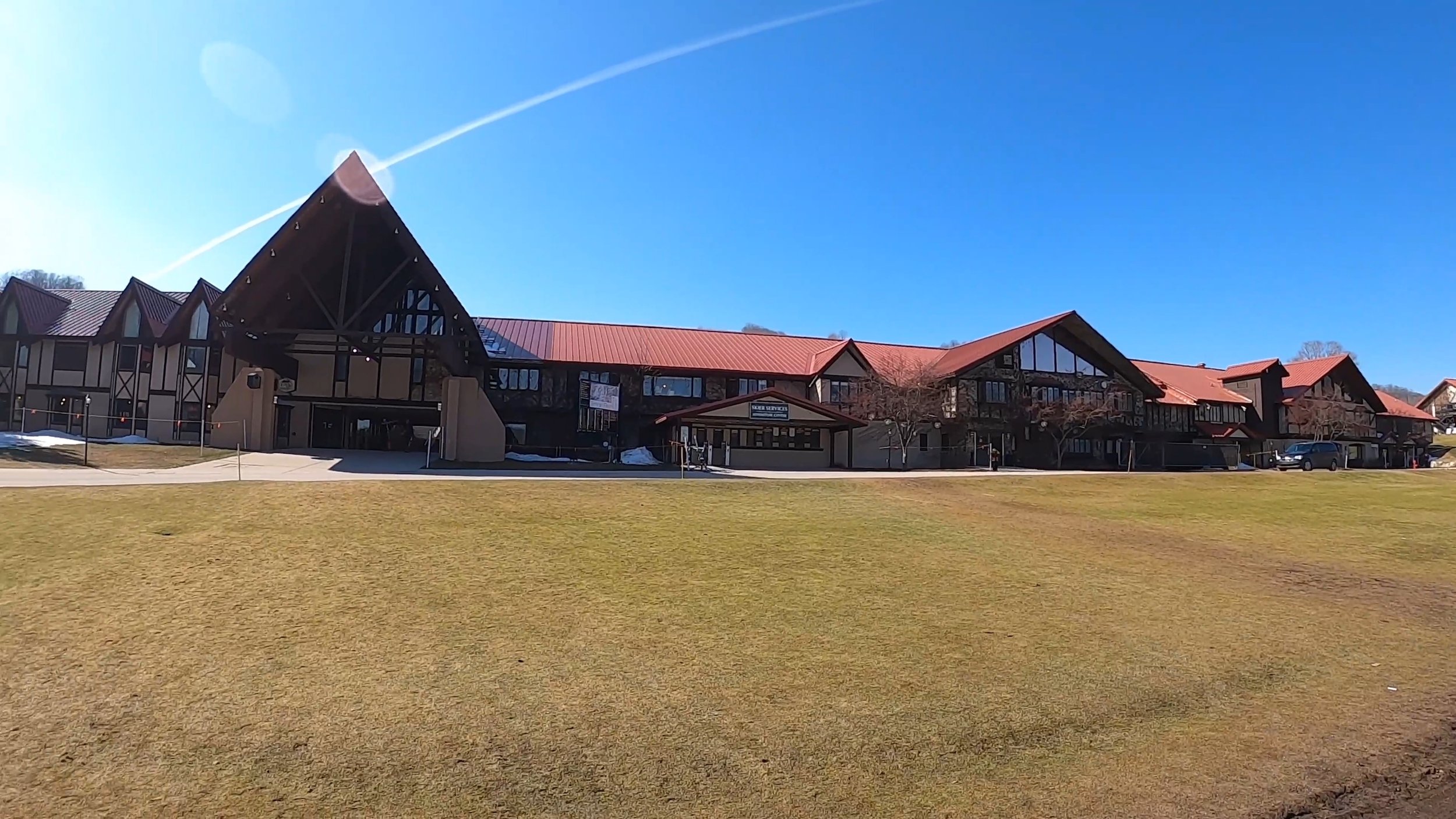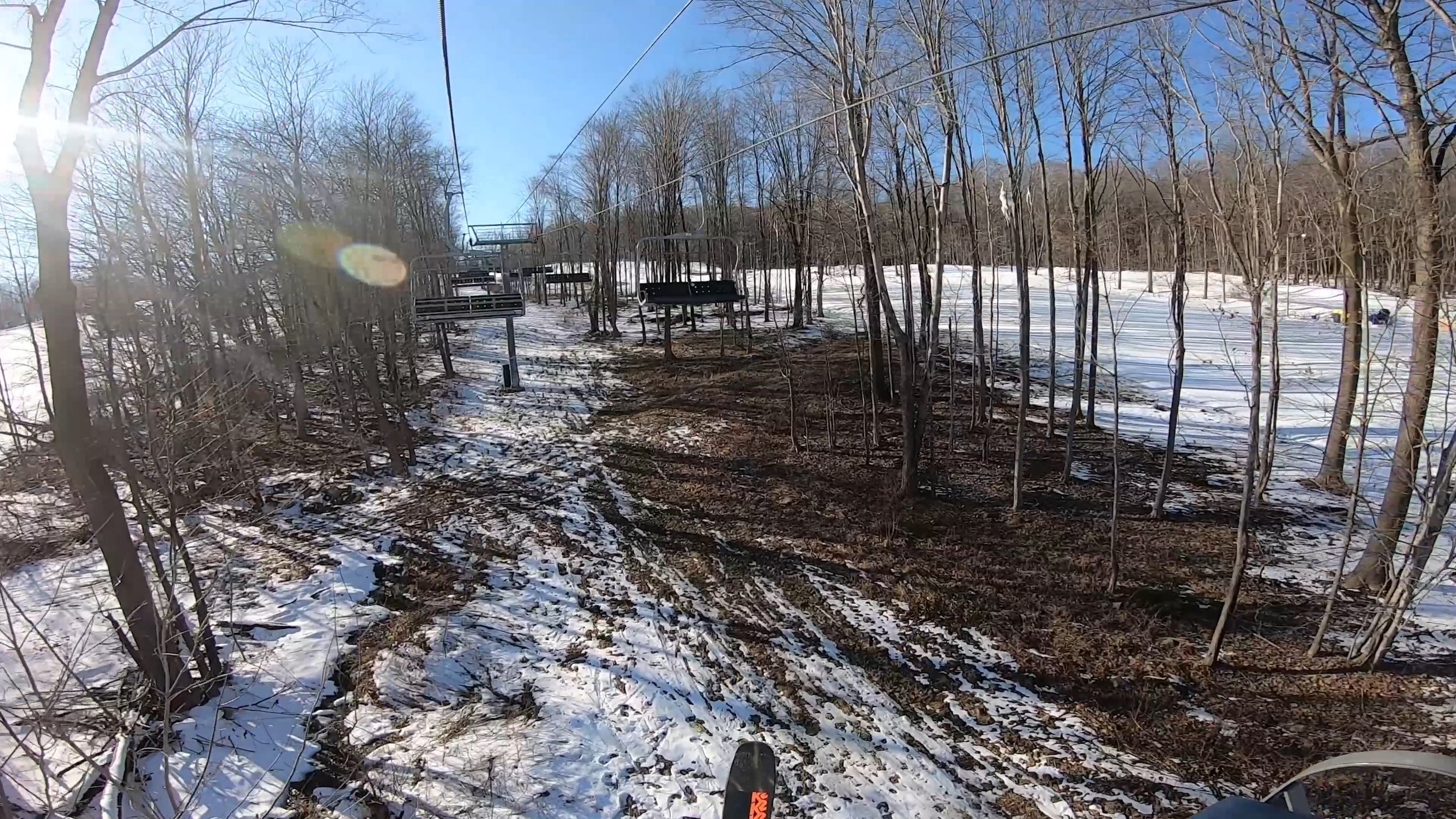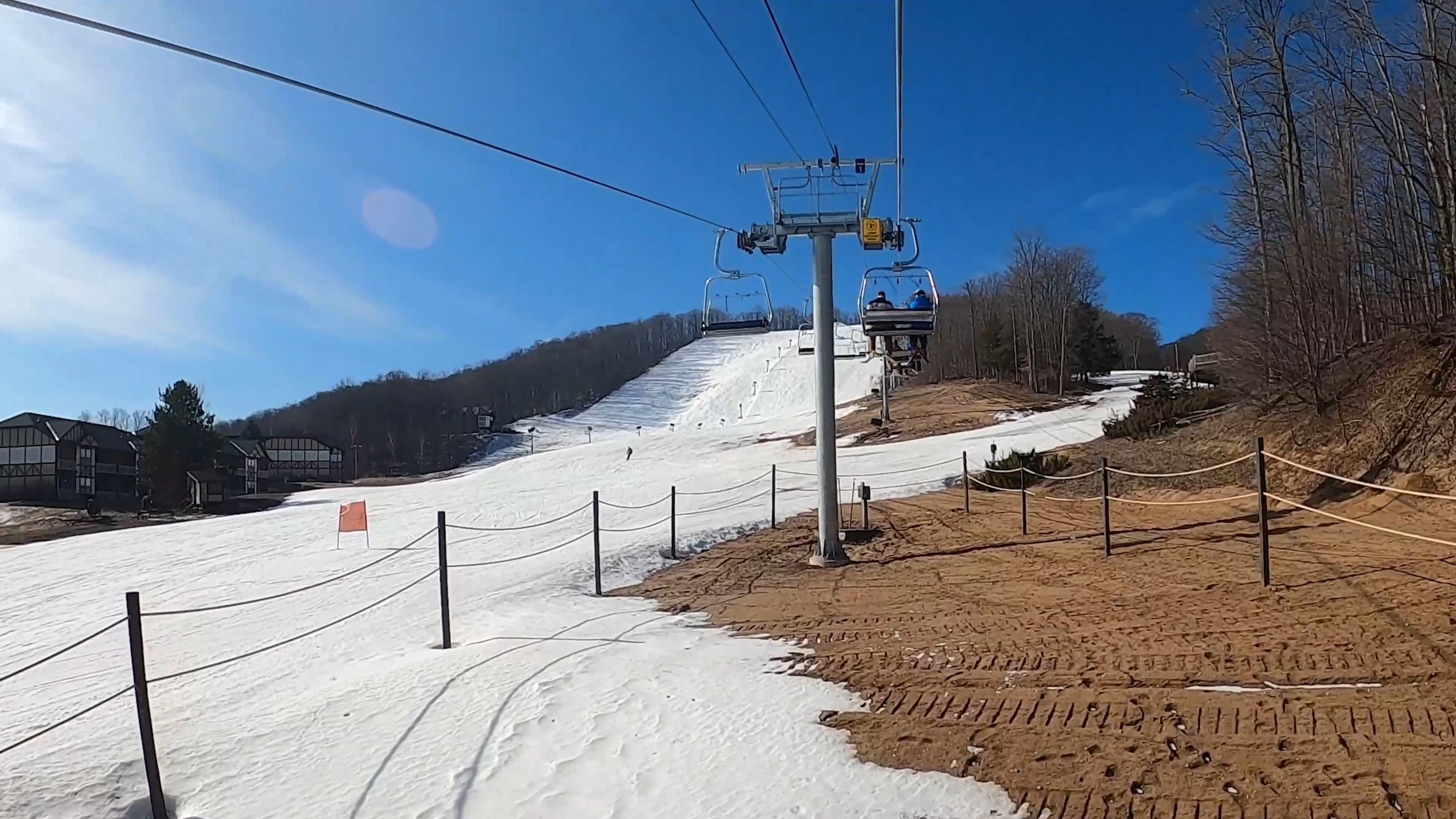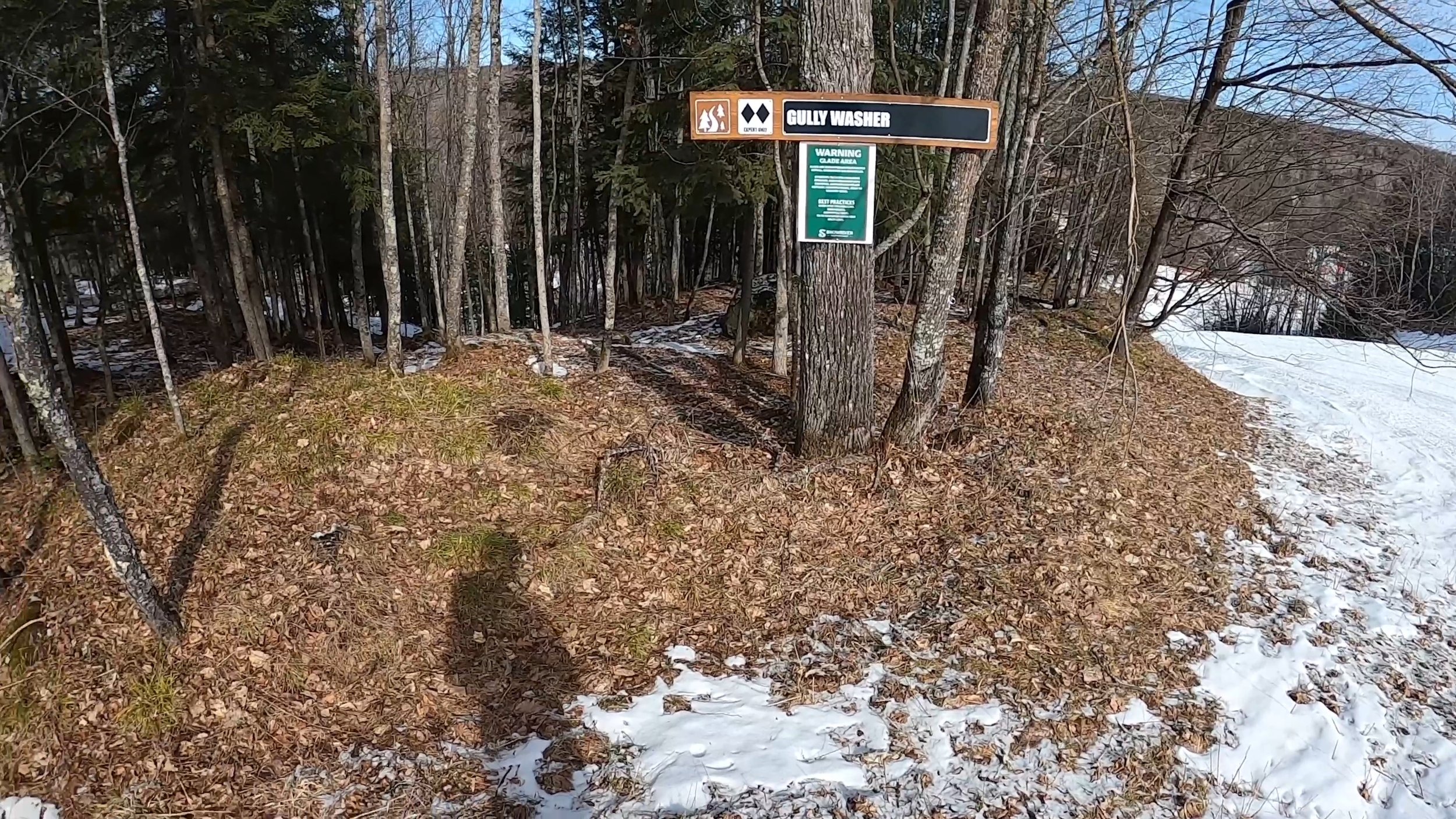The Midwest Had a Historically Terrible Ski Season. What Happened?
Similar to much of North America, the Midwest ski season started well below average in terms of snowfall. But unlike the rest of the continent, the ski season never really bounced back in the Midwest, leading to closures at some of the most prominent ski resorts in early March or even late February. Some resorts were unable to ever open at all, leading to the loss of winter activities within many communities across the region.
So what happened in the Midwest this season, and what does this mean for the future of skiing in the region? In this article, we’ll go through exactly how the Midwest’s ski season failed to take off from winter start to winter end, and we’ll highlight some of the biggest factors that hurt operations, even despite resorts’ best efforts.
Several Midwest ski resorts got their snow guns out as soon as they could, aiming to be the first in North America to open for the season.
October: Pre-Season Stoke
Issues with the Midwest’s ski season started to take root as early as this past October. The upper Midwest tends to see below-freezing temperatures at night starting around this time, allowing for some snowmaking efforts to occur at various hills attempting to be the first to open in North America. While Arapahoe Basin and Keystone typically draw most of the attention of the race to open, many Midwest resorts open right on the heels of these Colorado giants—if not even before so.
This year, the Midwest was beaten to the chase by a couple of hills in the East and out West. Ski Ward in Massachusetts was the first to open on October 22, followed by Colorado’s Arapahoe Basin a week later. But the Midwest was not far behind, with Andes Tower Hills in Minnesota opening a magic carpet on October 28 and the state’s Wild Mountain opening for some top-to-bottom skiing on October 30.
Though these hills were the first to spin a lift for skiers and snowboarders, fluctuating temperatures in the following weeks led to these hills closing until snowmaking temperatures returned. These short-lived openings are typical in the Midwest ski scene and are typically a way to build the stoke for the upcoming winter months.
Due to warmer-than-average temperatures, Midwest resorts such as The Highlands at Harbor Springs were unable to make snow—and as a result, were forced to push back their initial opening dates.
November: Pushed-Back Openings
Unfortunately, November would not be promising for that stoke. The month saw warmer-than-average temperatures, a setting that would become the precedent for most of the winter. Any hills that were fortunate enough to provide some limited openings in October were forced to temporarily close until the proper temperatures returned.
A typical start to operations around many Midwestern resorts is to have terrain open for the Thanksgiving holiday weekend, with a heavy focus on snowmaking—as well as some dependence on natural snowfall—to get the vast majority of terrain open by Christmas and New Year’s. After that, resorts tend to maintain a consistent operating schedule for the remainder of the season. However, this season saw many resorts pushing back their opening days by a week or two due to a lack of proper snow cover.
The operating situation might have been okay if the issue were just a lack of storms—after all, the Midwest is no stranger to snow droughts, and it’s common for hills to see less than 100 inches of snow in a typical season. However, temperatures were just too high to allow for the snowmaking that nearly every Midwest hill is dependent upon to practically open. Resorts with larger skiable footprints, longer vertical drops, and more technical terrain faced significant operational challenges, primarily due to the sheer volume of snowmaking needed to ensure adequate coverage across the slopes. Hills such as the aforementioned Wild Mountain and Andes Tower Hills were able to open more reliably for Thanksgiving weekend thanks to their smaller footprints, but certain other local resorts with less advanced snowmaking setups weren’t as fortunate.
Although the terrain openings at this time were typically confined to green and blue runs, many if not all of the resorts opening at this time provided some level of terrain parks within their openings.
While many Midwest resorts were able to open thanks to small periods of snowmaking, temperatures remained well above average.
December: Abnormally Warm Temperatures
With the pushed-back openings due to warm late November temperatures, December saw the bulk of the Midwest’s ski areas begin spinning their lifts and working towards enhancing their skiable footprints with snowmaking. However, temperatures would only remain at a consistent below freezing level for a few days at a time, rather than the usual dry cold found in the Midwest during this time. As a result, not only were resorts only able to make snow in certain spurts, rather than over the course of a consistent interval, but the periods of above-freezing temperatures worked away at the snow base progress the resorts were making. This made opening new terrain difficult, to say the least, and many resorts saw their skiable footprint averages for Christmas fall below the mark.
Another issue that began to present itself during this time was the lack of natural snowfall and precipitation in general. Much of the Midwest missed out on a white Christmas as temperatures remained in the upper 30s and 40s Fahrenheit on Christmas Day. One exception to this was Michigan’s Northern Lower Peninsula, where resorts such as Boyne Mountain and Nub’s Nob began to see some lake effect snow roll through—bringing a handful of inches to give their slopes a much more pleasing aesthetic. However, this was countered by an especially unusual lack of snow in Michigan’s Upper Peninsula, an area that can average above 200 inches of snow each winter due to lake effect and cold temperatures from Lake Superior. Mount Bohemia, which has no snowmaking and relies on all-natural snowfall, saw almost no snow through the new year—and was unable to provide any estimate for an opening day, which in a typical season would occur in late December or early January.
Cold temperatures and a large storm allowed Michigan’s Mount Bohemia, which relies entirely on natural snowfall, to finally open for the season on January 17.
January: Some Signs of Hope
The beginning of January showed some temporary signs of progress for the Midwest’s ski season. Most parts of the upper Midwest saw temperatures dip back below freezing on a consistent basis, finally allowing for any resorts that were unable to fully open their snowmaking terrain in December to button up their footprint. Small snow events brought improved conditions across many ski areas as temperatures remained within the usual winter standard—and in some cases, got incredibly frigid.
Mid-January even saw the biggest snow event of the season, with a large storm blanketing much of Wisconsin, Iowa, Minnesota, Illinois, and Michigan with anywhere from 10 to 20 inches of snow, leading many to believe the winter would turn around. Ski areas on the receiving side of Lake Superior and Michigan began to see the lake effect pile up with the colder temperatures allowing for most of their mountains to become skiable and conditions to improve to the best they had been all season. Mount Bohemia also saw its lake effect pick up substantially, allowing the mountain to open on January 17, and allowing it to accumulate close to 100 inches of snow by the end of the month.
The one notable area that did miss these larger snow events was Northern Minnesota, with resorts such as Lutsen and Giant’s Ridge only able to open terrain where snowmaking was present. But this part of the region still had cold enough temperatures for much of the month to allow the resorts to build up a man-made base.
However, these wintry conditions only lasted for about two weeks. Near the tail end of January, temperatures began to rise, getting close to 50 degrees in some areas, leading to much of the natural snowfall melting—and in most of the Midwest, reducing skiable terrain back only to the runs with snowmaking potential.
Spring and even summer-like temperatures wreaked havoc on Midwest ski areas in February, with record-high temperatures at many resorts.
February: The Season Falls Apart
Unfortunately, any hope for a real ski season brought about by January’s storms was quickly dashed when February rolled around. February was the Midwest ski scene’s worst nightmare, with temperatures consistently above freezing—if not above 40 degrees during the day—for most of the Midwest throughout the entire month. Many areas of the Midwest saw record highs, with some days reaching into the 60s and even 70s, further establishing the meltdown.
The warm temperatures were not the only problem at hand. A complete lack of snowfall provided no relief from the unfriendly circumstances, even during brief colder periods, leading on-mountain conditions to deteriorate rapidly. Spring skiing was common across the board, as the sun and warm air felt more like mid-March than February. Many ski areas had to issue temporary closures due to rain during this time, something that usually only comes up in March or April.
Some northern ski areas such as Mount Bohemia, Boyne, and Snowriver were able to pick up a few small snow totals during small lulls in the warm temperatures, but these were the exceptions, not the norm. Those areas not fortunate enough to pick up this lake effect, and even some of those that were, fired their snow guns back up during small cold stretches to bolster their base depths as best as possible to guarantee operations into late March or early April. These snowmaking operations were typically carried out during the nights when temperatures just dropped back to an acceptable level.
By this point, Mount Bohemia and other lake effect mountains were forced to close resort sections that either relied on natural snowfall, suffered from sun exposure, or faced primarily south. However, some terrain zones remained skiable thanks to north-facing aspects or shade from trees that helped maintain the limited natural snow cover.
Unfortunately, the end of February saw many hills begin to close for the season due to consistent adverse conditions. Ski areas such as Devil’s Head in Wisconsin, Timber Ridge in Michigan, and a few more across the southern Midwest began to close down for the season as their well-above-average temperatures eradicated their snow base. For the hills still fortunate to have their lifts spinning, skiers and riders were treated to soft snow brought upon by these spring-like conditions.
Despite a few solid storms this month, the bases at most Midwest resorts have largely been eradicated.
March: Game Over
By early March, it was clear that it was game over for the Midwest’s ski season. The first few weeks of the month saw much of the same weather-wise as February, with temperatures in the 60s and 70s not out of the question in the first days of the month. With minimal potential for new snow both natural and man-made, many resorts decided it was time to call it a wrap on the 2023-24 ski season entirely.
Most notably, Mount Bohemia closed on March 3, the earliest closing date in its 24-year history. Close to half of all ski areas in the Midwest called it quits by the second weekend of March, with many more getting close to closing in the coming weeks—if not days. A handful of resorts have placed their closing dates for the first week of April, but with the snow bases melting away, it will be interesting to see what terrain offerings are looking like at that time.
With this all being said, there is a little bit of promise at a couple of mountains. A few northern resorts, such as Snowriver and Ski Brule, were able to make some snow with some colder temperatures to make these early April closing dates possible. In addition, the region is on track to receive a nice storm this weekend, which should help some resorts prolong their seasons a bit longer. And even if snow conditions don’t recover, with the end of the season drawing near, a number of ski resorts have concert and festival events planned to end the season on a high note as skiers and snowboarders look forward to a snowier season next year.
The Midwest’s terrible ski season meant many families—especially those in rural areas—were unable to access crucial outdoor recreation throughout the long winter months.
Final Thoughts
So while conditions did look promising during a few short periods this winter, the Midwest ski season ultimately felt like it was over before it ever got going. While a few large storms did occur in January, the region suffered from an almost complete lack of snowfall outside of that, and it was just too warm to allow for the fundamental snowmaking that would provide even a base layer in many areas. Several ski areas saw less than 50% of their already-scant average snowfall totals, making for almost nonexistent natural coverage for most of the season.
We do have to note that just as we’re releasing this, parts of the Midwest are finally on track to receive significant snow totals over the next few days. But for the resorts that are even still open, the snow base has dwindled to the point where the new storm system is likely too little, too late.
One could argue the worst thing to come out of this was the inability of the small, local hills to open up consistently and provide families around the Midwest with outdoor recreation for the long winter months. Many of these hills simply could not justify opening with almost complete uncertainty in the weather. In a sense, the “heart” of Midwest skiing wasn’t present this year, which is to say accessible skiing to everyone. If more seasons like this continue down the road, it’s sadly unclear what the long-term future holds for these types of local areas.
Another big issue is that even during the brief periods when ski slope conditions were actually good, consumers may not have even been thinking about skiing or riding this year. While some resorts were able to make impressive amounts of snow during the January cold snap, the lack of snow cover outside the resorts themselves made for a decidedly un-wintry feel in the region, especially over the past few weeks—and whether factual or not, these circumstances likely dissuaded at least some Midwest locals from going.
But does this mean that skiing in the Midwest is on its way out forever? Absolutely not. Many signs point to operators committing to the region for the long haul, with several mountains investing in infrastructure enhancements in the past few years. Some of these include the Disciples 8 lift at Boyne Mountain, the Camelot 6 lift at The Highlands at Harbor Springs, and the Voyageur Express chair at Snowriver. And of course, more and more mountains continue to invest more heavily in snowmaking infrastructure every year, allowing for more efficient man-made snow and better coverage during the periods when temperatures are favorable. So while the Midwest may not be as reliable as true destination ski regions—with this year being perhaps the most prime example—we’re excited to see the region evolve and spend more time in it in the coming years.

